COLOMA
|
COLOMA |
|
|
|
|
NAME: Coloma COUNTY: El Dorado ROADS: 2WD GRID #(see map): 2 CLIMATE: Mild winter, warm summer BEST TIME TO VISIT: Anytime |
COMMENTS:
On highway 49, a must see, Semi-ghost. REMAINS: Many old and original historic sites and buildings. |
|
Here is where the great California gold rush had its beginning. Just north of Placerville, Coloma was the home of Johan Sutter whose name will be forever linked to the gold rush days. Sutter came to California from his native Switzerland in 1834 and was granted some land on the Sacramento River. It was toward the end of 1847 that Sutter began construction of his sawmill at a site the Indians called Cullooma. Sutter had a partner named James Marshall in building the sawmill. It was Marshall, not Sutter, who first discovered gold at Sutter's Mill. Ironically, neither Sutter or Marshall profited from a discovery which should have made them independently wealthy. Among the things to see while visiting Coloma is the home of James Marshall at the time of his discovery in 1849 as well a his grave which overlooks the site of his discovery. Ghosttowns.com Settled along the banks of the South Fork between Sutter's Mill and Mormon Island is the first important mining town of the 1848 gold rush days. By the summer of 1848 Coloma had about 300 frame buildings and a big hotel under construction. Because of the remoteness of the location, prices were outrageous. Almost any commodity sold at the flat rate of a dollar a pound. Shovels and picks were at least $50 each. Wool shirts sold for $50 each. Since the dollar was worth at least 100 times more than it is today, such prices were outlandish. But Coloma's hectic days were numbered. Richer localities up and down the Mother Lode were drawing away her residents. By 1870 Coloma was reduced to 200 residents. Where gold was discovered is now a state park with appropriate historical markers and an extensive museum. Some of the original frame buildings still stand and have been preserved as historical markers of the first town to emerge from the gold rush days of 1848. Submitted by Henry Chenoweth. 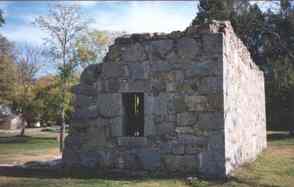 Jail Courtesy Dolores Steele 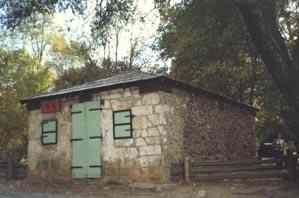 Wah Hop Store Courtesy Dolores Steele 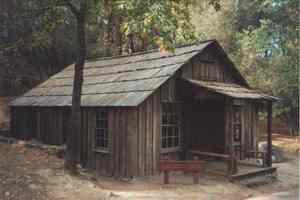 James Marshall cabin - 1860 Courtesy Dolores Steele 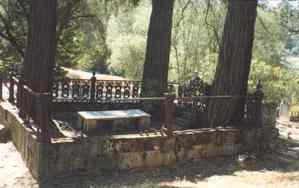 Sutter Mill Cemetery Courtesy Dolores Steele 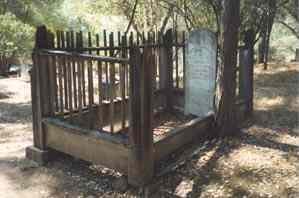 Sutter Cemetery grave - 1850 Courtesy Dolores Steele 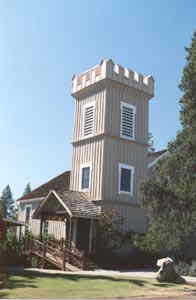 Back in the trees - little Saint John Catholic Church - 1856 Courtesy Dolores Steele
|
|
|---|
|
|